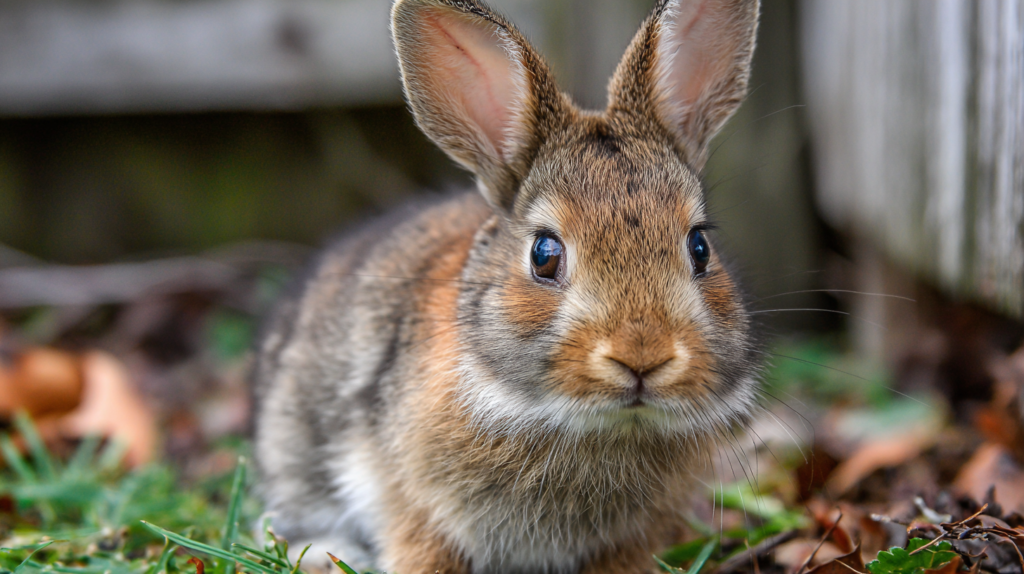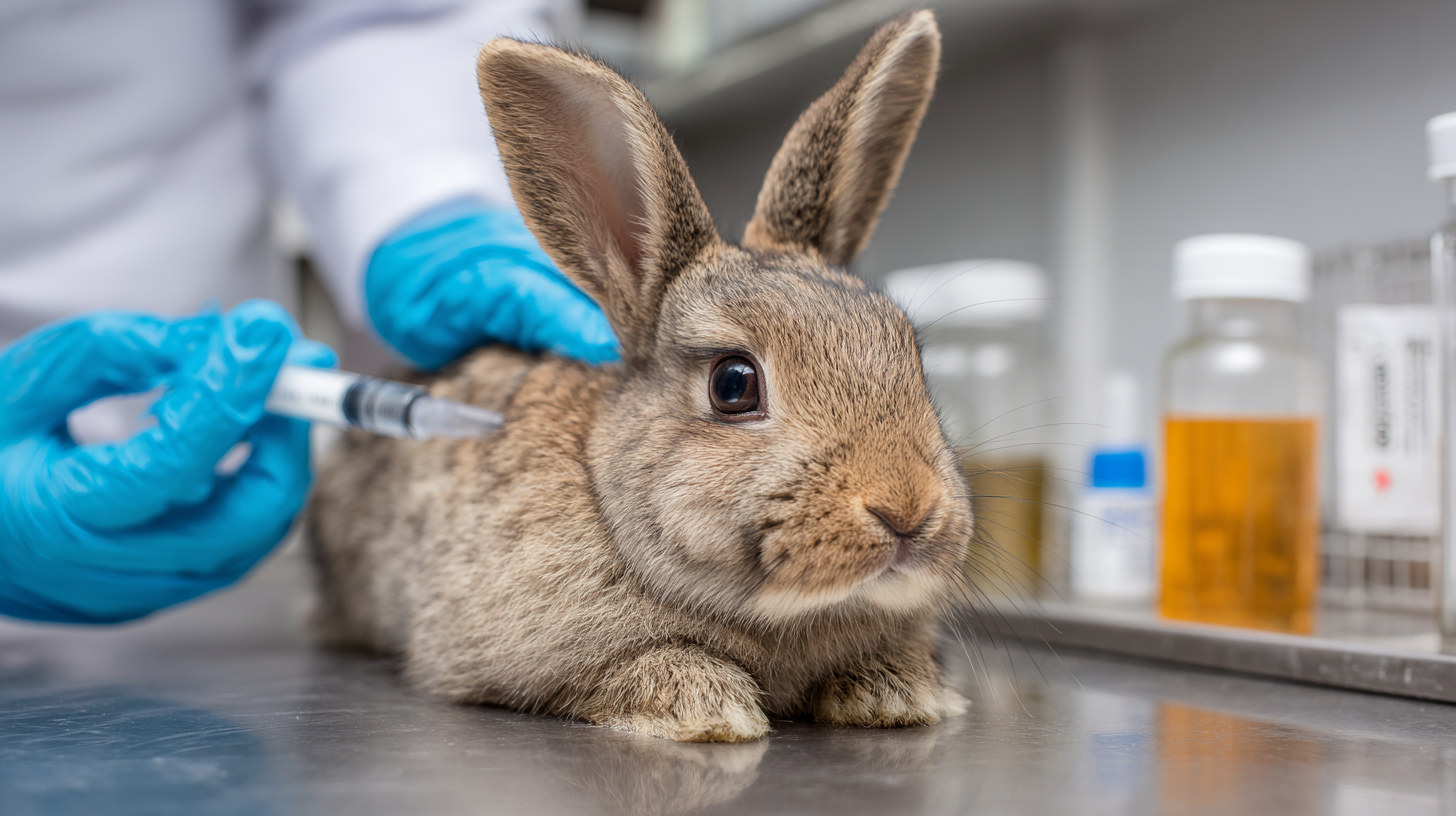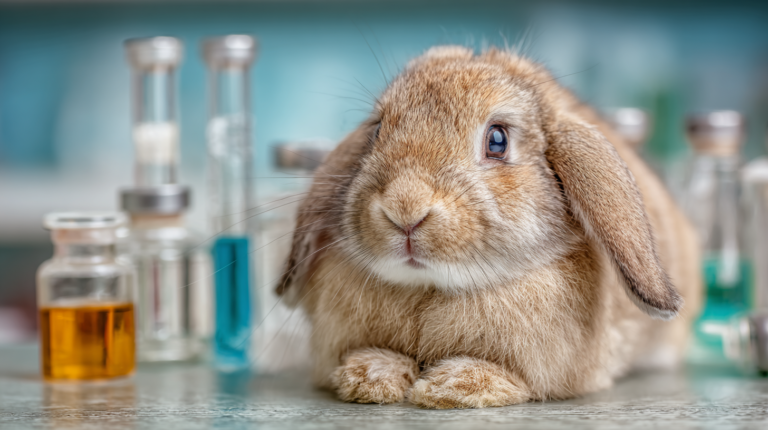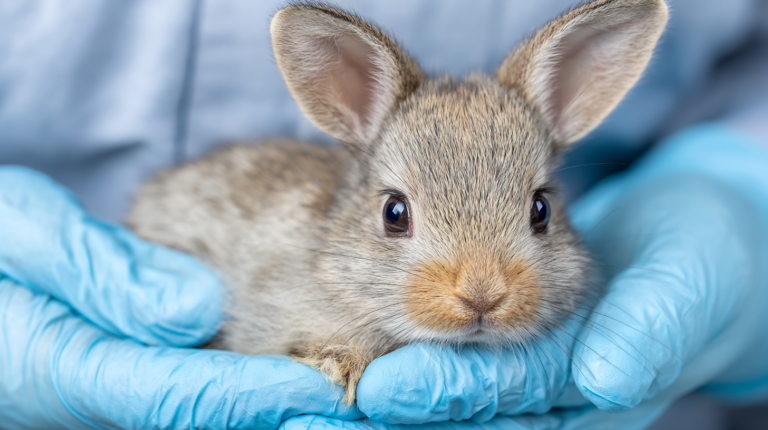Discover critical facts about Rabbit Hemorrhagic Disease RHD, symptoms, prevention, and treatment options. Essential guide for rabbit owners to protect their pets.
Table of Contents
Rabbit Hemorrhagic Disease RHD stands as one of the most devastating viral infections affecting domestic and wild rabbits worldwide. This highly contagious condition has claimed countless rabbit lives since its first identification in China in 1984, making it a critical concern for every rabbit owner, breeder, and veterinarian. Understanding the complexities of RHD isn’t just about medical knowledge—it’s about protecting the beloved rabbits in our care and communities.
The emergence of new strains like RHDV2 has amplified concerns within the rabbit community, as this variant affects rabbits of all ages and has shown resistance to traditional prevention methods. For rabbit owners, recognizing the signs, understanding transmission routes, and implementing proper preventive measures can mean the difference between life and death for their cherished companions.

This comprehensive guide delves into the seven most crucial aspects of Rabbit Hemorrhagic Disease RHD that every rabbit owner must understand. From recognizing early symptoms to implementing life-saving prevention strategies, we’ll explore evidence-based information that empowers you to make informed decisions about your rabbit’s health and wellbeing.
Understanding Rabbit Hemorrhagic Disease RHD:
| Clinical Sign | Severity | Timeline | Description |
|---|---|---|---|
| Sudden Death | Acute | Within 12-72 hours | Often the first and only sign observed in peracute cases of RHD |
| Lethargy & Depression | Acute | 1-2 days | Rabbits become unusually quiet, withdrawn, and inactive |
| Loss of Appetite | Acute | 24-48 hours | Complete refusal to eat favorite foods or treats |
| Fever | Acute | 6-24 hours | Body temperature rises above normal (39-40°C / 102-104°F) |
| Respiratory Distress | Acute | 12-36 hours | Difficulty breathing, mouth breathing, or rapid respiration |
| Nasal Discharge | Chronic | 2-5 days | Blood-tinged or clear discharge from nose |
| Hemorrhagic Signs | Acute | Final hours | Internal bleeding, bloody urine, or blood from mouth/nose |
| Neurological Signs | Chronic | 3-7 days | Incoordination, seizures, or abnormal behavior in some cases |
Rabbit Hemorrhagic Disease RHD represents a family of highly pathogenic viruses belonging to the Caliciviridae family. The disease manifests in two primary forms: the original RHDV (Rabbit Hemorrhagic Disease Virus) and the more recent RHDV2 variant, which emerged in France in 2010 and has since spread globally.
The virus specifically targets rabbits and related lagomorphs, causing acute hepatic necrosis and disseminated intravascular coagulation. What makes RHD particularly insidious is its ability to remain stable in the environment for extended periods, surviving in organic matter for up to 105 days at room temperature and remaining viable in frozen conditions for years.
RHDV2 has proven especially concerning due to its broader host range and ability to infect rabbits as young as 15 days old, unlike the original strain that typically affected rabbits over eight weeks of age. This expanded vulnerability has significant implications for rabbit populations, both domestic and wild.
The virus spreads through multiple pathways, including direct contact with infected rabbits, contaminated food, water, bedding, and even through insects, birds, and predators that have been exposed to infected carcasses. Understanding these transmission routes is fundamental to implementing effective prevention strategies.
Recognizing the Clinical Signs:
The clinical presentation of Rabbit Hemorrhagic Disease RHD varies significantly depending on the strain, the rabbit’s age, and individual susceptibility factors. Recognizing these signs early can be crucial, though the disease’s rapid progression often leaves little time for intervention.
Acute Form Symptoms: The acute form typically presents with sudden onset and rapid progression. Affected rabbits may exhibit respiratory distress, characterized by labored breathing and nasal discharge that can be blood-tinged. Neurological signs including seizures, head tilting, and loss of coordination frequently occur. Many rabbits develop a high fever, become lethargic, and show signs of abdominal pain.
Peracute Form Manifestations: In peracute cases, which represent the most severe presentation, rabbits may appear normal and then suddenly collapse and die within hours. This form is particularly heartbreaking for owners, as there may be no warning signs. The only indication might be finding the rabbit in a characteristic position with its head thrown back and limbs extended.
Subacute and Chronic Presentations: Some rabbits, particularly those with partial immunity, may develop subacute or chronic forms. These animals might show gradual weight loss, decreased appetite, mild respiratory symptoms, and general malaise over several days to weeks. While these forms progress more slowly, they can still be fatal without appropriate intervention.
RHDV2 Specific Signs: RHDV2 infections often present with additional gastrointestinal symptoms, including diarrhea and severe dehydration. Young rabbits infected with RHDV2 may show stunted growth and failure to thrive before developing more severe symptoms.
Transmission Pathways: How RHD Spreads Through Rabbit Communities
Understanding how Rabbit Hemorrhagic Disease RHD spreads is essential for implementing effective prevention strategies. The virus employs multiple transmission routes, making containment challenging but not impossible with proper knowledge and precautions.
Direct Contact Transmission: The most straightforward transmission occurs through direct contact between infected and susceptible rabbits. This includes physical contact during grooming, mating, or simply sharing the same living space. The virus can be present in all body fluids and secretions of infected animals, including saliva, nasal discharge, urine, and feces.
Environmental Persistence: RHD viruses demonstrate remarkable environmental stability, surviving on surfaces, in organic matter, and within rabbit habitats for extended periods. Contaminated cages, feed bowls, water containers, and bedding can harbor infectious virus for weeks to months, depending on environmental conditions.
Vector-Mediated Transmission: Various arthropods, including fleas, flies, and mosquitoes, can serve as mechanical vectors, carrying the virus between rabbits without becoming infected themselves. This mode of transmission is particularly significant in outdoor rabbit facilities and areas with high wild rabbit populations.
Fomite Transmission: Inanimate objects contaminated with the virus can facilitate transmission. This includes clothing, shoes, equipment, vehicles, and even food products. Hay and pellets sourced from areas with infected wild rabbit populations have been implicated in disease outbreaks.
Airborne Transmission: While less common, airborne transmission can occur over short distances, particularly in enclosed spaces with poor ventilation. This route becomes more significant in high-density rabbit facilities where infected animals are housed in close proximity to susceptible ones.
Prevention Strategies: Building a Fortress Against RHD
| Prevention Method | Age Group | Frequency | Priority | Details |
|---|---|---|---|---|
| Primary Vaccination | 5-6 weeks | Single dose | Essential | First RHD vaccination for young rabbits |
| Annual Booster | All ages | Yearly | Essential | Maintains immunity for 12 months |
| Quarantine New Rabbits | All ages | 2-4 weeks | Critical | Isolate new arrivals before introducing to colony |
| Equipment Disinfection | N/A | After each use | Critical | Clean all tools, cages, and feeding equipment |
| Visitor Restrictions | N/A | Ongoing | Important | Limit access to rabbit areas, provide protective clothing |
| Wild Rabbit Control | N/A | Monthly check | Important | Prevent contact between domestic and wild rabbits |
| Food Source Security | N/A | Daily | Critical | Store hay and pellets in sealed, rodent-proof containers |
| Footwear Disinfection | N/A | Each entry | Important | Disinfect shoes before entering rabbit areas |
Preventing Rabbit Hemorrhagic Disease RHD requires a multi-faceted approach combining vaccination, biosecurity measures, and environmental management. The cornerstone of prevention lies in understanding that RHD prevention is not a single action but a comprehensive lifestyle approach to rabbit care.
Vaccination Protocols: Vaccination remains the most effective tool against RHD. The RHDV2 vaccine, when administered according to veterinary guidelines, provides significant protection against both RHDV and RHDV2 strains. Initial vaccination typically begins at 10-12 weeks of age, with annual boosters recommended for maintained immunity.
The vaccine requires proper storage and handling to maintain efficacy, and vaccination schedules should be tailored to individual rabbit needs and local risk factors. Pregnant does can be vaccinated to provide passive immunity to their offspring through maternal antibodies.
Quarantine Procedures: Implementing strict quarantine protocols for new rabbits is essential. New additions should be isolated for a minimum of 14-21 days, during which time they should be monitored for signs of illness. This quarantine period should include separate housing, feeding equipment, and handling protocols to prevent cross-contamination.
Biosecurity Measures: Effective biosecurity involves controlling access to rabbit areas, implementing proper sanitation protocols, and maintaining clean environments. This includes regular disinfection of facilities using appropriate virucidal agents, controlling rodent and insect populations, and establishing visitor restrictions.
Feed and Water Management: Sourcing feed from reputable suppliers and avoiding hay or pellets from areas with known wild rabbit populations helps minimize risk. Water systems should be regularly cleaned and disinfected, and communal water sources should be avoided in multi-rabbit facilities.
Environmental Controls: Maintaining proper ventilation, controlling humidity levels, and ensuring adequate spacing between rabbit enclosures all contribute to reducing transmission risk. Regular removal of organic matter and proper waste disposal are essential components of environmental management.
Treatment Options: Current Approaches and Limitations
While there is no specific antiviral treatment for Rabbit Hemorrhagic Disease RHD, supportive care and symptomatic treatment can sometimes help affected rabbits, particularly in subacute cases. Understanding treatment limitations is crucial for setting realistic expectations and making informed decisions about care.
Supportive Care Protocols: Supportive treatment focuses on maintaining hydration, supporting organ function, and managing symptoms. Intravenous or subcutaneous fluid therapy helps combat dehydration and supports kidney function. Nutritional support through syringe feeding or tube feeding may be necessary for rabbits that have stopped eating.
Symptomatic Management: Pain management using appropriate analgesics can improve comfort in affected rabbits. Anti-inflammatory medications may help reduce tissue damage, while antibiotics might be prescribed to prevent secondary bacterial infections. Oxygen therapy may be beneficial for rabbits experiencing respiratory distress.
Experimental Treatments: Research into potential treatments continues, with some experimental approaches showing promise. These include antiviral compounds, immunomodulators, and specialized supportive care protocols. However, these treatments remain largely experimental and are not widely available.
Palliative Care Considerations: In many cases, particularly with acute presentations, palliative care focused on comfort and dignity may be the most appropriate approach. This includes providing a quiet, comfortable environment, gentle handling, and making difficult decisions about quality of life.
Recovery and Monitoring: Rabbits that survive RHD infections may develop long-term complications, including liver dysfunction, kidney damage, and chronic health issues. Long-term monitoring and supportive care are essential for these survivors.
| Stage/Test | Timeframe | Method | Success Rate | Notes |
|---|---|---|---|---|
| Initial Clinical Assessment | 0-2 hours | Physical examination | 85% | Immediate evaluation of clinical signs and history |
| Blood Sample Collection | 2-4 hours | Laboratory | 95% | For RT-PCR testing and hematology |
| RT-PCR Testing | 6-24 hours | Molecular | 98% | Most accurate diagnostic method for RHD |
| Antigen Detection | 4-8 hours | ELISA | 90% | Rapid test for virus detection |
| Supportive Care Start | 0-1 hour | Fluid therapy, pain relief | Limited | No specific antiviral treatment available |
| Isolation Protocol | Immediate | Physical separation | 100% | Critical to prevent spread to other rabbits |
| Post-mortem Examination | 24-48 hours | Necropsy | 95% | Definitive diagnosis in fatal cases |
| Environmental Disinfection | 2-6 hours | Chemical disinfection | 99% | Essential for outbreak control |
| Contact Tracing | 24-72 hours | Epidemiological survey | Variable | Identify potential exposure sources |
| Vaccination of Contacts | 12-24 hours | Emergency vaccination | 80% | May provide protection if given early |
Impact on Wild and Domestic Rabbit Populations
The impact of Rabbit Hemorrhagic Disease RHD extends far beyond individual pet rabbits, affecting entire ecosystems and rabbit populations worldwide. Understanding these broader implications helps contextualize the importance of prevention and control measures.
Wild Rabbit Population Dynamics: RHD has caused significant declines in wild rabbit populations across multiple continents. In some regions, rabbit populations have declined by 80-90% following RHD outbreaks, with cascading effects on ecosystems where rabbits serve as key prey species.
The European rabbit, originally from the Iberian Peninsula, has been particularly affected, with populations in Spain and Portugal experiencing dramatic declines. These changes have affected predator species, including lynx, eagles, and various carnivores that depend on rabbits as a primary food source.
Domestic Rabbit Industry Effects: The rabbit industry, including meat production, fur farming, and pet breeding, has been significantly impacted by RHD. Economic losses from mortality, reduced productivity, and increased veterinary costs have been substantial. Some regions have seen complete closure of rabbit farming operations due to recurring outbreaks.
Conservation Implications: Several endangered rabbit species have been threatened by RHD, including the Iberian lynx’s primary prey species. Conservation efforts have had to adapt to include RHD prevention and management as core components of species recovery programs.
Ecological Restoration Challenges: In areas where rabbits play important ecological roles, such as maintaining grassland ecosystems through grazing, RHD has complicated restoration efforts. The loss of rabbit populations has led to changes in vegetation composition and structure, affecting entire ecological communities.
Diagnostic Approaches: Confirming RHD Suspicions
Accurate diagnosis of Rabbit Hemorrhagic Disease RHD is crucial for implementing appropriate control measures and preventing further spread. The diagnostic process involves clinical assessment, laboratory testing, and post-mortem examination when necessary.
Clinical Diagnosis Challenges: Clinical diagnosis of RHD can be challenging due to the rapid progression of the disease and similarity to other rabbit conditions. The sudden death of apparently healthy rabbits, particularly in groups, raises strong suspicion for RHD. However, clinical signs alone are insufficient for definitive diagnosis.
Laboratory Testing Methods: Several laboratory tests are available for RHD diagnosis, including RT-PCR (Reverse Transcription Polymerase Chain Reaction), which can detect viral genetic material from tissue samples, blood, or feces. Antigen detection tests and serology can also provide diagnostic information, though timing of sample collection is critical.
Post-Mortem Examination: Necropsy examination by a qualified veterinarian or pathologist can provide valuable diagnostic information. Characteristic lesions include liver necrosis, pulmonary edema, and hemorrhagic changes in multiple organs. Histopathological examination of tissue samples can confirm the diagnosis and differentiate between RHD strains.
Sample Collection and Handling: Proper sample collection and handling are essential for accurate diagnosis. Samples should be collected promptly and stored appropriately to preserve viral nucleic acids and antigens. Multiple tissue types may be required for comprehensive testing.
Differential Diagnosis: RHD must be differentiated from other causes of sudden death in rabbits, including poisoning, heat stroke, cardiac conditions, and other infectious diseases. A thorough investigation of the rabbit’s history, environment, and clinical presentation is essential for accurate diagnosis.
Frequently Asked Questions
Everything you need to know about Rabbit Hemorrhagic Disease
Can humans catch Rabbit Hemorrhagic Disease RHD from infected rabbits?
No, Rabbit Hemorrhagic Disease RHD is specific to rabbits and related lagomorphs. The virus cannot infect humans, dogs, cats, or other non-lagomorph animals. However, humans can act as mechanical carriers, spreading the virus on clothing, shoes, or equipment between rabbit populations.
How long does the RHD vaccine provide protection?
The RHD vaccine typically provides protection for approximately 12 months, which is why annual booster vaccinations are recommended. However, immunity levels can vary between individual rabbits, and some veterinarians may recommend more frequent boosters in high-risk areas or for particularly valuable breeding animals.
What should I do if I suspect my rabbit has RHD?
If you suspect RHD, immediately isolate the affected rabbit from other rabbits and contact your veterinarian urgently. Handle the rabbit minimally and use strict hygiene measures. Do not move the rabbit to different locations, as this could spread the virus. Time is critical, so seek professional veterinary advice immediately.
Can indoor rabbits get RHD?
Yes, indoor rabbits can contract RHD through contaminated food, bedding, or items brought into the home. The virus can also be carried on clothing, shoes, or other objects. Additionally, insects can carry the virus indoors. This is why vaccination is recommended for all rabbits, regardless of housing situation.
How do I properly disinfect after an RHD outbreak?
Effective disinfection requires using virucidal agents specifically effective against non-enveloped viruses. Sodium hypochlorite (bleach) at 1:10 dilution, 70% ethanol, or commercial disinfectants labeled as effective against Caliciviruses should be used. All organic matter must be removed before disinfection, and contact time should be at least 10 minutes.
Are some rabbit breeds more susceptible to RHD than others?
While all rabbit breeds can be affected by RHD, some studies suggest that certain breeds may show varying levels of susceptibility. However, factors like age, health status, and individual immune response appear to be more important than breed. No rabbit breed should be considered immune to RHD.
No FAQ items match your search. Try different keywords.
The Global Response:
The worldwide impact of Rabbit Hemorrhagic Disease RHD has necessitated coordinated international responses involving veterinary authorities, researchers, and rabbit industry stakeholders. Understanding these efforts provides insight into the ongoing battle against this devastating disease.
Surveillance and Monitoring Programs: Countries with significant rabbit populations have established surveillance programs to monitor RHD occurrence and track new strain emergence. These programs involve regular testing of wild rabbit populations, investigation of mortality events, and coordination between wildlife agencies and veterinary services.
Research Initiatives: Current research focuses on developing improved vaccines, understanding viral evolution, and investigating potential treatments. International collaborations are studying the genetic diversity of RHD viruses, their adaptation mechanisms, and the development of resistance to control measures.
Regulatory Responses: Many countries have implemented regulations regarding rabbit importation, vaccination requirements, and outbreak response protocols. These regulatory frameworks aim to prevent virus introduction, control spread during outbreaks, and protect both domestic and wild rabbit populations.
Future Prospects: Ongoing research into next-generation vaccines, improved diagnostic methods, and potential therapeutic interventions offers hope for better RHD management. However, the virus’s continued evolution and adaptation present ongoing challenges requiring sustained scientific attention and resources.
For more expert pet care tips and product recommendations, visit BlithePet.com — your trusted source for pet wellness.
Conclusion:
Rabbit Hemorrhagic Disease RHD represents one of the most serious threats to rabbit health worldwide, but knowledge and proactive management can significantly reduce risks. The seven vital facts we’ve explored—from understanding the disease’s nature and transmission to implementing comprehensive prevention strategies—provide the foundation for protecting your rabbits.
The key to RHD prevention lies in combining vaccination with robust biosecurity measures, environmental management, and ongoing vigilance. Regular veterinary care, proper quarantine procedures, and maintaining clean environments all contribute to reducing risk. While the disease remains a serious concern, informed rabbit owners who implement appropriate prevention strategies can significantly protect their animals.
Remember that RHD prevention is not a one-time effort but an ongoing commitment to your rabbits’ health and wellbeing. Stay informed about developments in RHD research, maintain open communication with your veterinarian, and never hesitate to seek professional advice when concerns arise.
The rabbit community’s collective efforts in prevention, research, and education continue to improve our understanding and management of this challenging disease. By staying informed and implementing evidence-based prevention strategies, we can work together to protect the rabbits we love and preserve rabbit populations for future generations.
Have a similar experience with your pet? Share it in the comments below!




